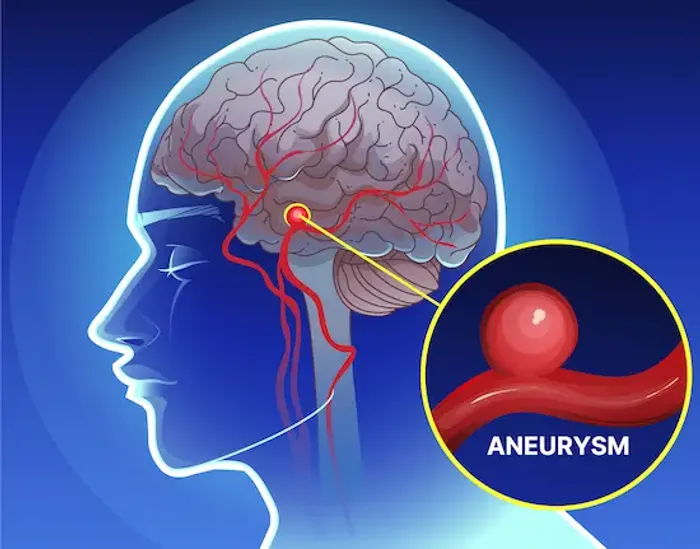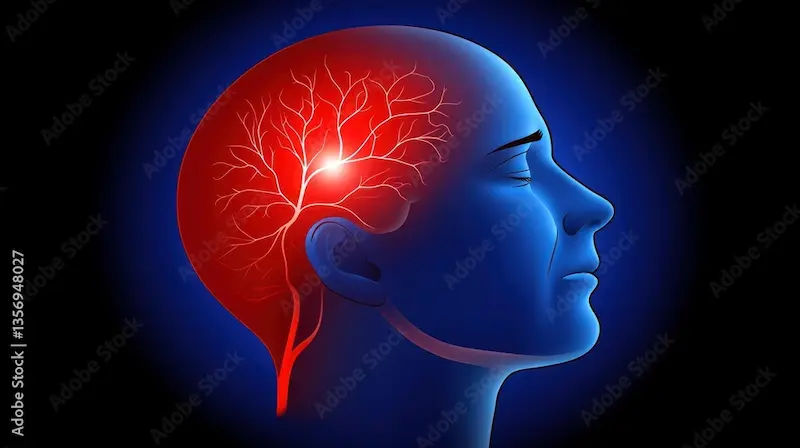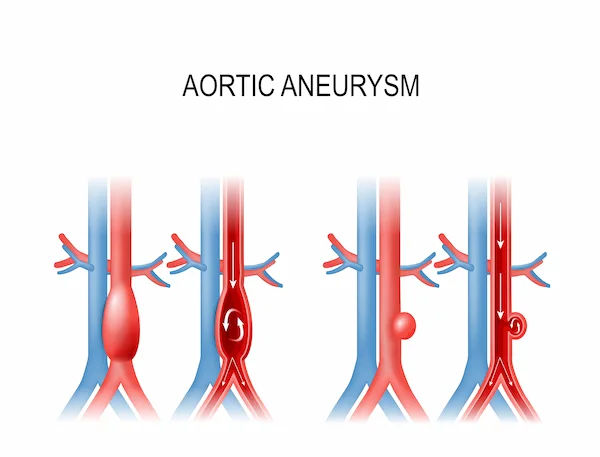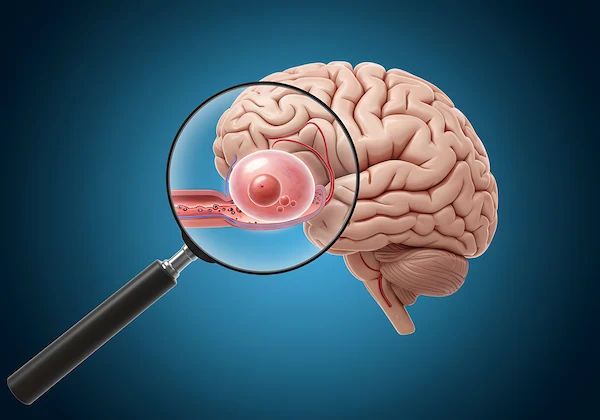Guide to Aneurysm Risk Factors What Know
Learn about the major risk factors for aneurysms, including those you can control and those you cannot. Understand how age, genetics, lifestyle, and medical conditions influence aneurysm development and discover ways to reduce your risk.


Introduction
An aneurysm is a term that often raises alarm, conjuring images of sudden, life-threatening events. Understanding what an aneurysm is, and more importantly, what contributes to its development, is the first step in proactive health management. An aneurysm is a bulge or ballooning in a blood vessel, similar to a weak spot on a tyre that expands under pressure. While they can form in any artery, the most common and dangerous sites are the brain (cerebral aneurysm) and the main artery carrying blood from the heart (aortic aneurysm). The main danger lies in the potential for this bulge to rupture, causing life-threatening internal bleeding.
This guide will demystify aneurysm risk factors, highlighting those you cannot change, such as genetics, and those you can manage, like high blood pressure and lifestyle choices. The aim is to provide information to assess your personal risk and take meaningful steps to protect your vascular health.
What Exactly is an Aneurysm?
To understand how aneurysms develop, it helps to first look at what they are and how they affect the blood vessels
structurally.
1. The Weak Spot in the Artery Wall
To understand risk factors, it helps to know the structure of an aneurysm. Arteries are muscular tubes with layered walls
designed to withstand constant blood flow. An aneurysm develops when a section of the arterial wall weakens. Over
time, blood pressure pushes the weakened area outward, forming a sac-like bulge. This bulge is unstable; the wall thins,
increasing the risk of a tear or rupture. It is similar to repeatedly stretching a balloon at one spot until it becomes fragile
and likely to burst.
2. Common Types: Brain (Cerebral) and Aortic Aneurysms
Aneurysms can occur anywhere, but two types are most critical due to their severity:
- Cerebral Aneurysms: These form in the blood vessels of the brain. Rupture leads to a haemorrhagic stroke, specifically a
subarachnoid haemorrhage, which is a medical emergency. - Aortic Aneurysms: These occur in the aorta, the body's largest artery. They are classified by location: thoracic aortic
aneurysms (in the chest) and abdominal aortic aneurysms (in the abdomen), the latter being more common. A rupture is
often catastrophic.
Consult Top Doctors for Personalised Advice
The Major Risk Factors You Need to Know
Aneurysms usually develop from a combination of factors that weaken the arterial wall. These can be categorised as
uncontrollable or controllable.
A. Uncontrollable Risk Factors
These are traits you are born with or develop over time that cannot be changed but must be recognised.
1. Age and Genetic Predisposition
The risk of aneurysms increases with age, particularly after 40. Arteries lose elasticity over time, making them more prone to weakening. Genetics also play a key role. A family history of aneurysms, especially in a first-degree relative,
increases your risk, suggesting a hereditary influence on connective tissue strength in arterial walls.
2. The Role of Sex and Family History
Sex influences risk depending on aneurysm type. Men are more likely to develop abdominal aortic aneurysms, while
women, especially post-menopause, have a higher risk of brain aneurysm rupture. Understanding your personal risk
requires considering both sex and family history.
3. Pre-existing Connective Tissue Disorders
Conditions such as Ehlers-Danlos syndrome and Marfan syndrome affect connective tissues, including arteries.
Individuals with these conditions are born with weaker arterial walls, greatly increasing the risk of aneurysm formation
or dissection. Regular monitoring by a vascular specialist is essential.
B. Controllable (Lifestyle) Risk Factors
These factors provide opportunities for prevention through lifestyle management.
1. High Blood Pressure: The Silent Accelerator
Hypertension places excessive stress on arterial walls. Persistent high pressure can weaken vulnerable areas or initiate
new aneurysms. Managing blood pressure through diet, exercise, and medication is vital.
2. Smoking and Tobacco Use
Smoking damages and inflames arterial linings, contributing to aneurysm formation. It also worsens hypertension and
atherosclerosis. Quitting tobacco significantly lowers aneurysm risk.
3. Atherosclerosis: The Plaque Connection
Fatty plaque buildup causes inflammation and weakens artery walls. Hardened arteries are less flexible and more prone
to damage from pressure fluctuations. Controlling cholesterol and maintaining heart-healthy habits reduce aneurysm risk.
Less Common but Significant Risk Factors
Beyond the major risk factors, certain less frequent conditions and behaviours can also contribute to aneurysm
formation and should not be overlooked.
1. Infections and Traumatic Injuries
Severe infections in the bloodstream or traumatic injuries can weaken arteries, sometimes leading to mycotic aneurysms
or post-traumatic aneurysms.
2. The Impact of Drug Abuse
Stimulants such as cocaine can spike blood pressure suddenly, stressing arterial walls and potentially triggering
aneurysm formation or rupture.
How to Assess and Mitigate Your Personal Risk
Knowing your personal risk factors is key to prevention, and taking proactive steps can help reduce the likelihood of an aneurysm developing or worsening.
1. When Should You Get Screened?
Screening is recommended for high-risk groups, such as men aged 65-75 who have smoked. Those with a strong family
history or connective tissue disorders should discuss personalised screening plans, which may include ultrasound, CT
scan, or MRI.
2. Actionable Steps for Risk Reduction
While age and genetics are unchangeable, controllable factors can be managed:
- Monitor and manage blood pressure through regular checks and adherence to treatment plans.
- Quit smoking with support programs to improve vascular health.
- Eat a heart-healthy diet rich in fruits, vegetables, whole grains, and lean proteins.
- Exercise regularly, aiming for at least 150 minutes of moderate activity per week.
- Manage stress, as chronic stress can contribute to hypertension.
If lifestyle measures are insufficient, doctors may recommend additional monitoring or tests. Apollo24|7 offers
convenient home sample collection for tests such as lipid profiles to keep track of vascular health.
Conclusion
Understanding aneurysm risk factors is about awareness and proactive management, not fear. While genetics cannot be changed, lifestyle choices significantly influence vascular health. Managing blood pressure, quitting tobacco, maintaining a balanced diet, and staying physically active strengthen your body's defences against aneurysm formation. High-risk individuals should consult healthcare professionals for personalised screening and monitoring plans. Proactive management is essential; your vascular health largely depends on the steps you take today.
Consult Top Vascular Surgeons
Consult Top Vascular Surgeons

Dr Balaraman P
Cardiothoracic and Vascular Surgeon
15 Years • M.Ch (CTVS),DNB(CTVS),FRCS(Eng)
Chennai
Apollo Speciality Hospitals OMR, Chennai

Dr Rinett Sebastian
Cardiothoracic and Vascular Surgeon
10 Years • MBBS,MS,MCH,DNB(CTVS)
Angamaly
Apollo Hospitals Karukutty, Angamaly
Dr Sumanth R
General Physician
2 Years • MBBS
Bengaluru
PRESTIGE SHANTHINIKETAN - SOCIETY CLINIC, Bengaluru

Dr. Ramalinga Reddy
General Physician
5 Years • MBBS MD General medicine
Bengaluru
PRESTIGE SHANTHINIKETAN - SOCIETY CLINIC, Bengaluru

Dr. Anand Ravi
General Physician
2 Years • MBBS
Bengaluru
PRESTIGE SHANTHINIKETAN - SOCIETY CLINIC, Bengaluru
Consult Top Doctors for Personalised Advice

Dr Balaraman P
Cardiothoracic and Vascular Surgeon
15 Years • M.Ch (CTVS),DNB(CTVS),FRCS(Eng)
Chennai
Apollo Speciality Hospitals OMR, Chennai

Dr Rinett Sebastian
Cardiothoracic and Vascular Surgeon
10 Years • MBBS,MS,MCH,DNB(CTVS)
Angamaly
Apollo Hospitals Karukutty, Angamaly
Dr Sumanth R
General Physician
2 Years • MBBS
Bengaluru
PRESTIGE SHANTHINIKETAN - SOCIETY CLINIC, Bengaluru

Dr. Ramalinga Reddy
General Physician
5 Years • MBBS MD General medicine
Bengaluru
PRESTIGE SHANTHINIKETAN - SOCIETY CLINIC, Bengaluru

Dr. Anand Ravi
General Physician
2 Years • MBBS
Bengaluru
PRESTIGE SHANTHINIKETAN - SOCIETY CLINIC, Bengaluru
More articles from Aneurysm
Frequently Asked Questions
Q1. Can stress cause an aneurysm to form?
While chronic stress can contribute to high blood pressure, a major risk factor, there is no direct evidence that stress alone causes aneurysms. Sudden extreme stress, causing a sharp blood pressure spike, could trigger rupture of an existing aneurysm.
Q2. What are the warning signs of a brain aneurysm before it ruptures?
Most unruptured brain aneurysms are symptomless. If an aneurysm grows large enough, it may cause a localised headache, vision changes, numbness, or eye pain. A sudden, severe 'thunderclap' headache signals rupture and requires emergency care.
Q3. Are there specific foods to avoid to prevent an aneurysm?
No single diet prevents aneurysms. High sodium, saturated fats, and processed foods increase the risk of hypertension and atherosclerosis. Focus on fruits, vegetables, and whole grains.
Q4. How often should someone with a family history get screened?
Screening frequency depends on family history and findings. If no aneurysm is detected, follow-up may be every 5-10 years. Small, stable aneurysms may require annual or more frequent monitoring. Consult a doctor for a tailored plan.
Q5. Is an aneurysm the same as a stroke?
No. An aneurysm is a structural problem in an artery, while a stroke occurs when brain tissue is damaged due to a lack of blood flow. A ruptured brain aneurysm can cause a specific type of stroke called a haemorrhagic stroke.




